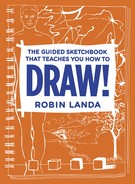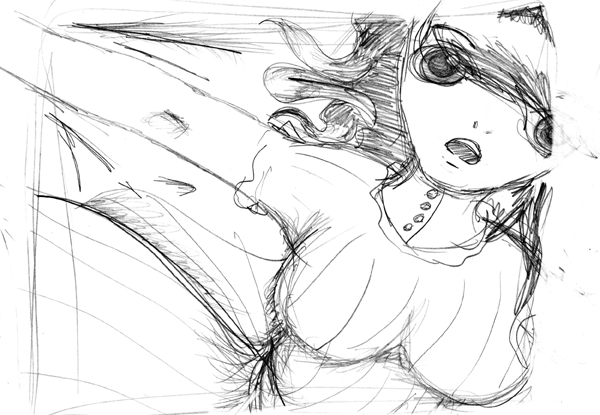Introduction
Why People Draw
Drawing makes your brain happy.
When you draw, you are using multiple brain regions. Your frontal lobe kicks into action providing reasoning, planning, movement, emotions, and problem solving. Your parietal lobe provides movement and orientation, recognition, perception of stimuli; your occipital lobe delivers visual processing; your temporal lobe, perception and memory; and your cerebellum, additional movement.
When you draw, you are concentrating, allowing the rewarding neurotransmitter dopamine to flow. Some people report feelings of calm. Others say drawing allows them to keenly focus.
Drawing entertains many of us.
Drawing is a way to make sense of one’s self in the world, a way to relate to others and to explore one’s own identity. It allows you to explore what you see in the visible world and interpret what you see.
Drawing is a way to visually communicate ideas and feelings.
Drawing visually records people, places, things, memories, and events.
Drawing is a form of creative self-expression.
Drawing is visual thinking—a cognitive way to explore and understand ideas and experiences.
Drawing from observation entails interpreting and visualizing what you see. Or you might visualize what you think in a conceptual drawing, or you can visualize what you imagine.
As a child, tracing your hand was a magical way to replicate your hand. Instinctively you knew the drawing was a record of your existence. Now, drawing can be anything you desire: naturalistic, realistic, stylized, abstract, nonobjective, whimsical, satirical, flat, illusionistic, textural, colorful, expressionistic—anything.
This book introduces drawing topics in a logical way, allowing you to build technical and compositional skills and comprehension. Some techniques have comprehensive step-by-step instructions. Some instructions are short prompts that cue a creative action. Highly esteemed artists, designers, illustrators, architects, filmmakers, animators, cartoonists, educators, and other creative professionals contributed many of the prompts in this book.
There are many ways to draw. Portraying the world as we see it is only one way to visualize. This guided sketchbook will teach you how to draw what you see as well as encourage you to draw conceptually and experiment. So make your brain happy—draw!
More Best Practice Tips to Remember
• Try to use “gist” thinking, or big-picture thinking, to think about the whole rather than parts. For example, when drawing a still life, don’t render one object and then move on to the next. Rather, work the entire composition at the same time, cultivating spatial relationships.
• Play!
• Observe mindfully.
• Evaluate spatial relationships. Pay as much attention to the interstices—the spaces between forms—as to the forms themselves. Imagine that between each form in your drawing there is a stretchy band that creates visual tension.

